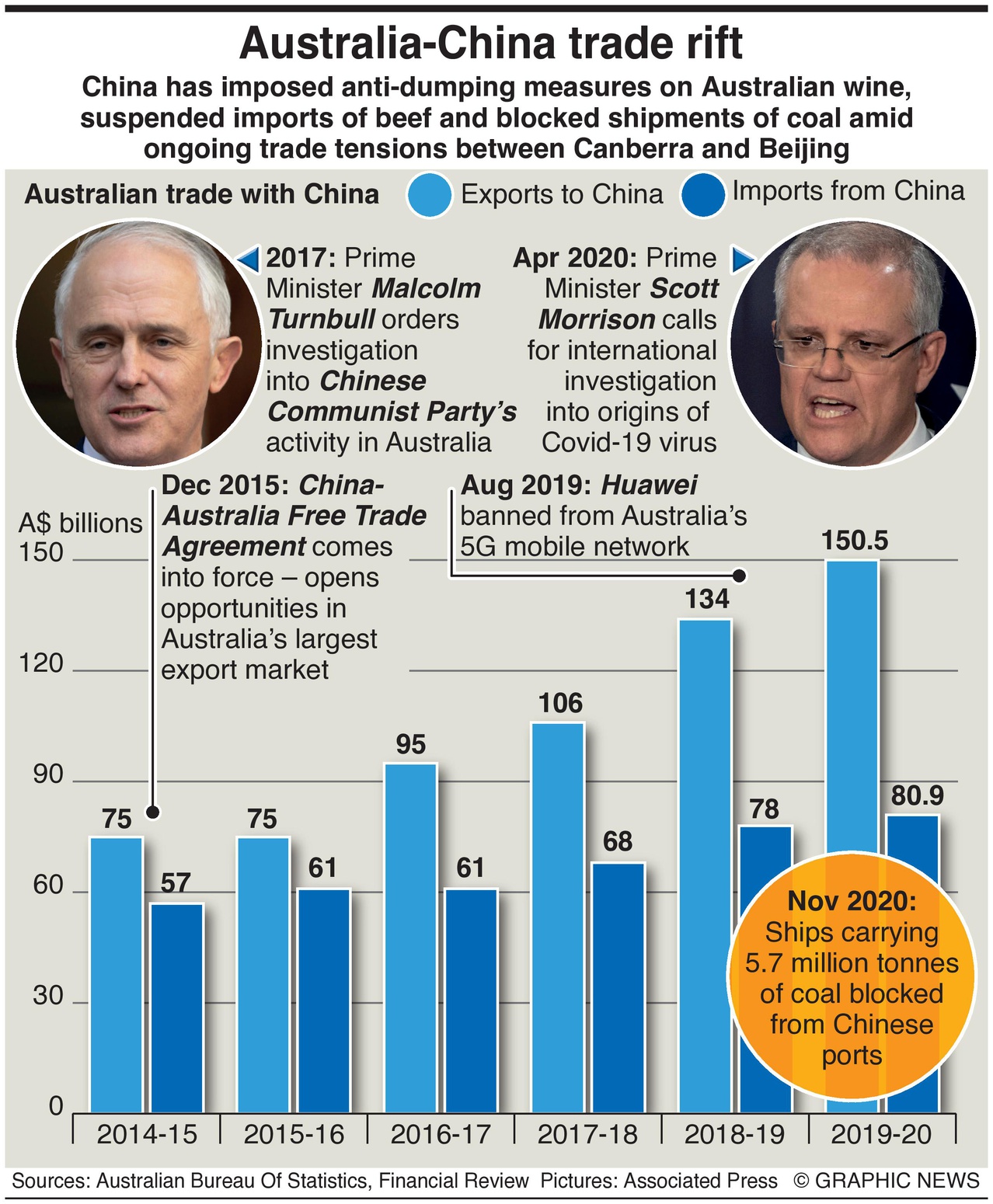The row has been intensifying for six months. In May Beijing slapped an 80 per cent punitive anti-dumping tariff on imports of Australian barley and banned imports of some Australian beef on health grounds.
More recently shipments of Aussie lobsters have been delayed until they spoiled and Australian winemakers face tariffs of between 107.1 per cent and 212.1 per cent. Wine exports to China hit a record A$1.3 billion (US$900 million) last year, according to Australian government data.
Beijing has halted imports of Australian coal — leaving some 66 bulk carriers loaded with more than 5.7 million tonnes of coal anchored off Chinese ports.
Since the signing of the China-Australia Free Trade Agreement (ChAFTA) which came in to force in December 2015, Australia has seen significant growth in trade between Australia and China. The value of goods exported doubled in the five years to 2019-20 from A$75 billion in 2014-15 to A$150.5 billion in 2019-20.
Since ChAFTA, however, relations have deteriorated. In 2017, revelations surfaced that a Chinese property tycoon with close ties to the Chinese Communist Party (CCP) had been donating large sums to Australian political parties.
Then Prime Minister Malcolm Turnbull ordered an investigation of the CCP’s meddling and legislated “interference” by foreign powers and their proxies as a criminal offence.
The following year, Turnbull announced that the Chinese telecoms giant Huawei was banned from Australia’s impending 5G mobile network, citing national security concerns.
In 2019, former Australian Security Intelligence Organisation boss Duncan Lewis accused the Chinese government of aiming to “take over” the Australian political system through “insidious” foreign interference.
This year, relations between Canberra and Beijing sank further as the crackdowns in Hong Kong and Xinjiang sparked disapproval from Canberra. In April Prime Minister Scott Morrison called for an international investigation into the origins of the coronavirus.




